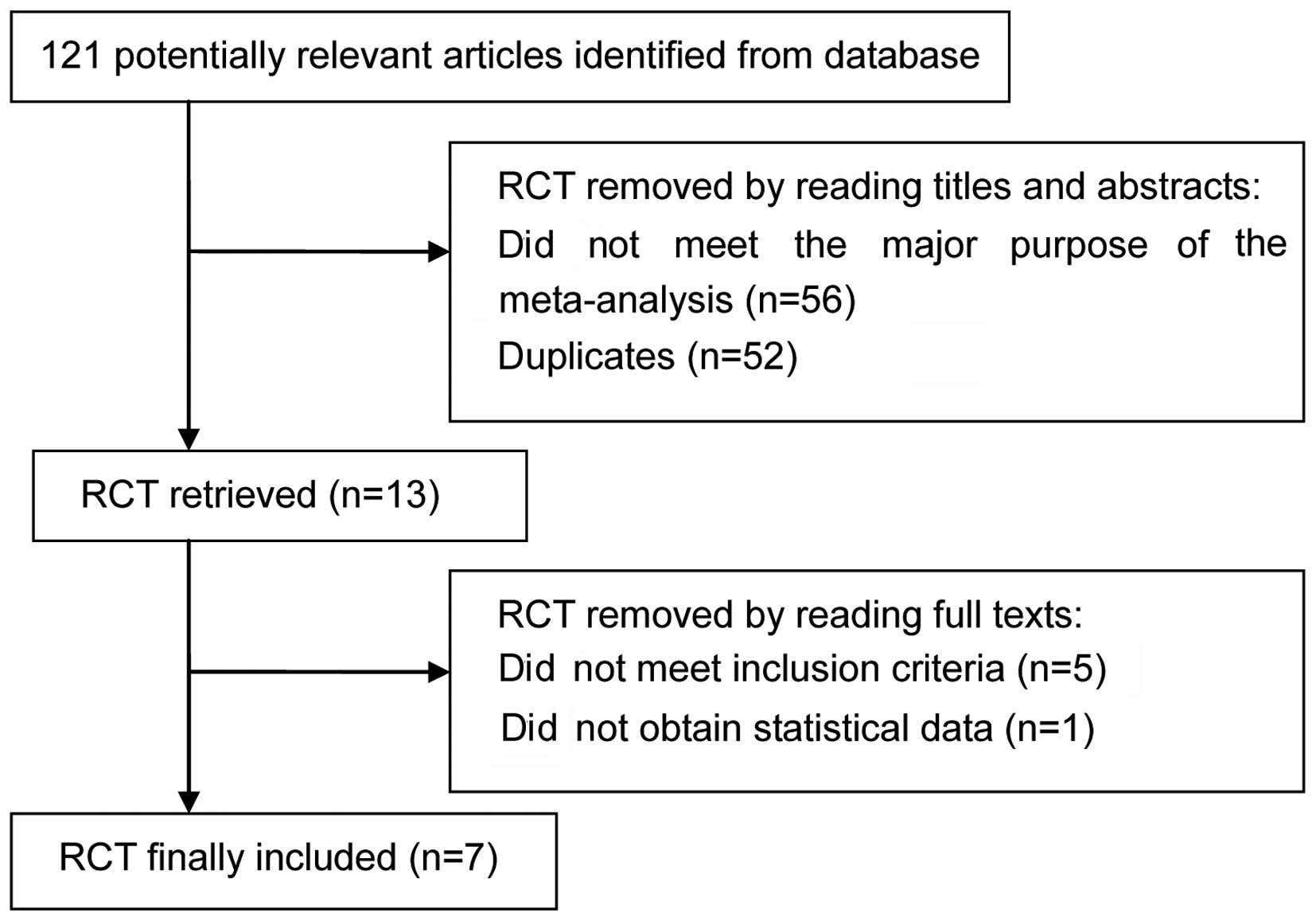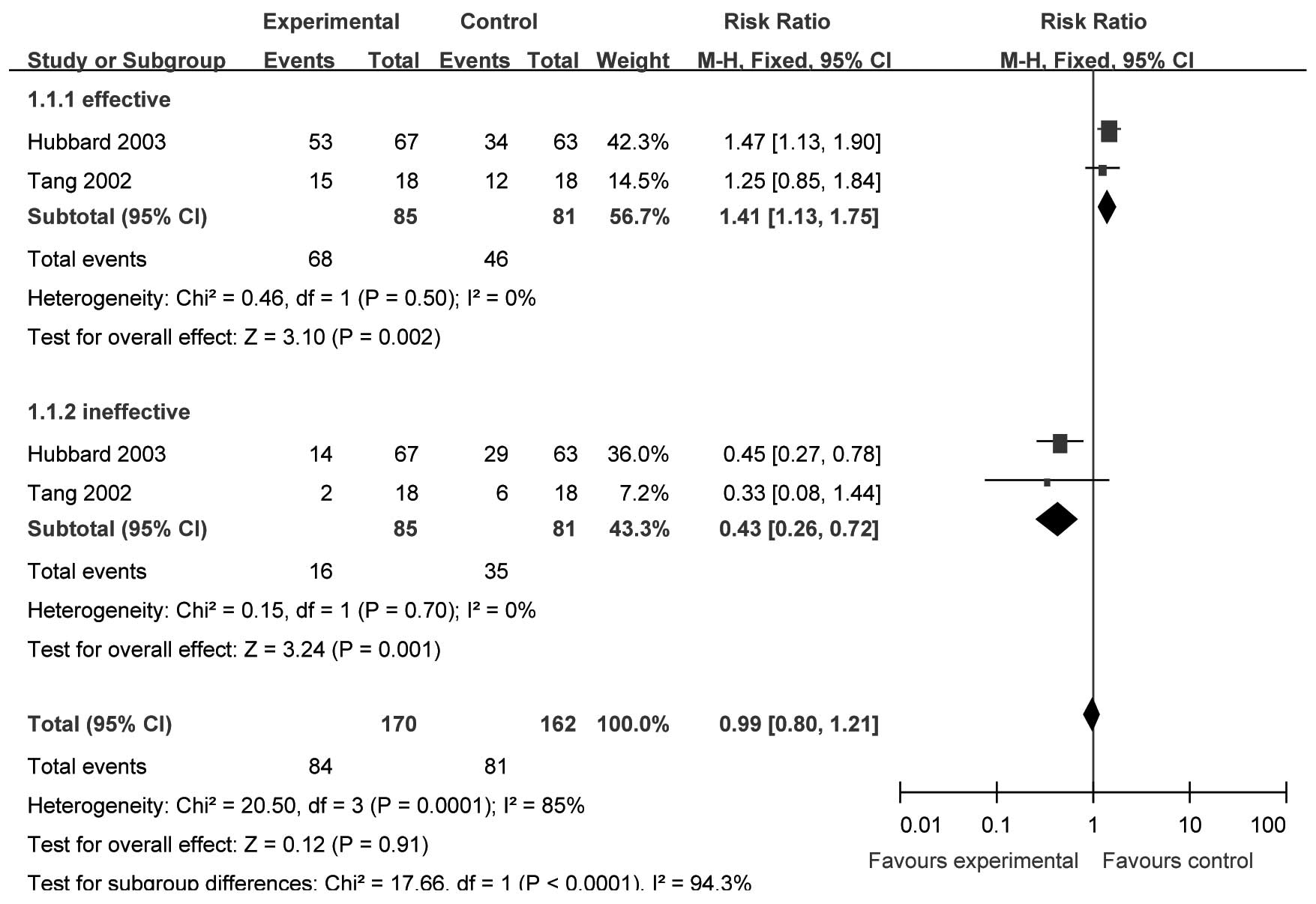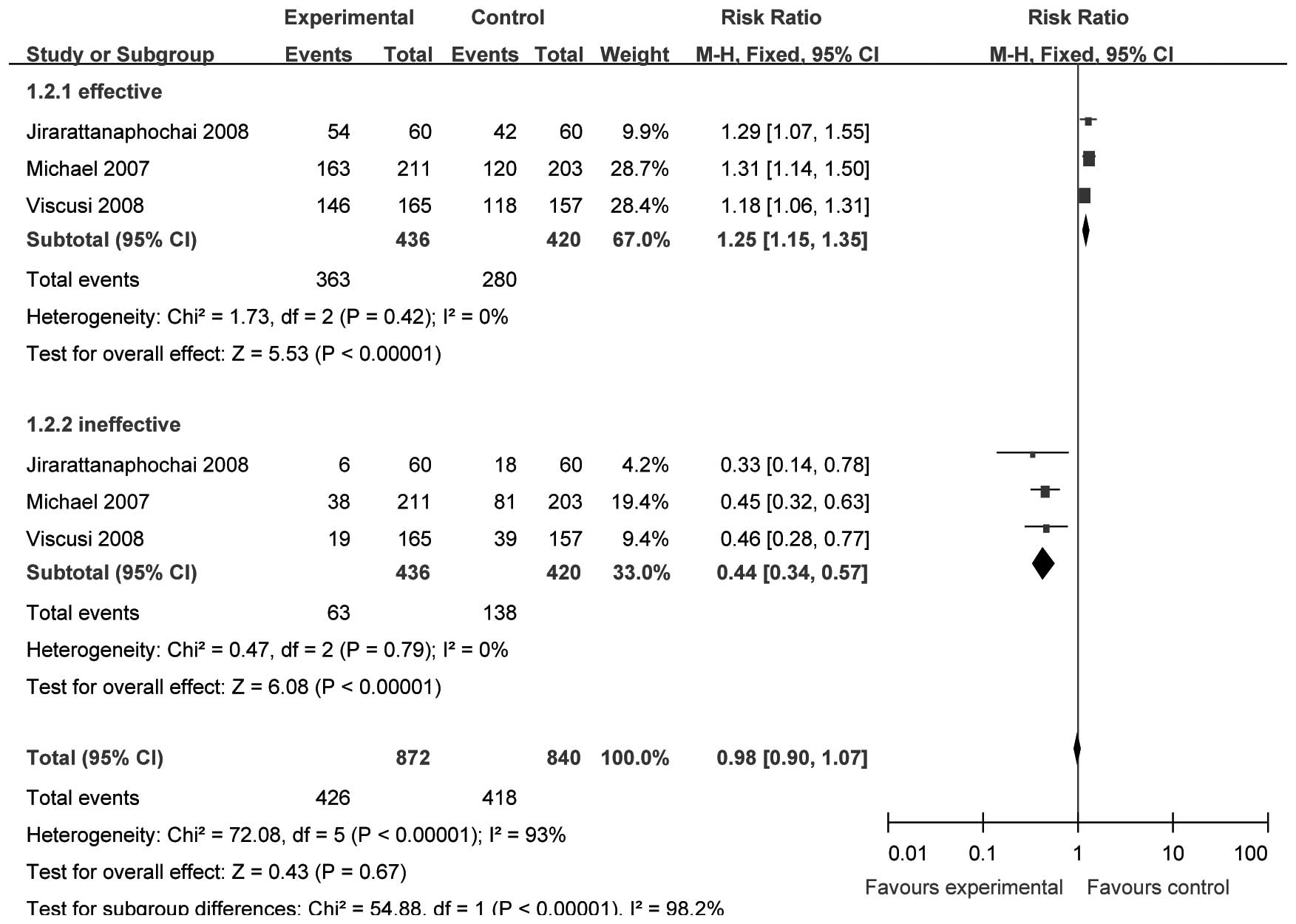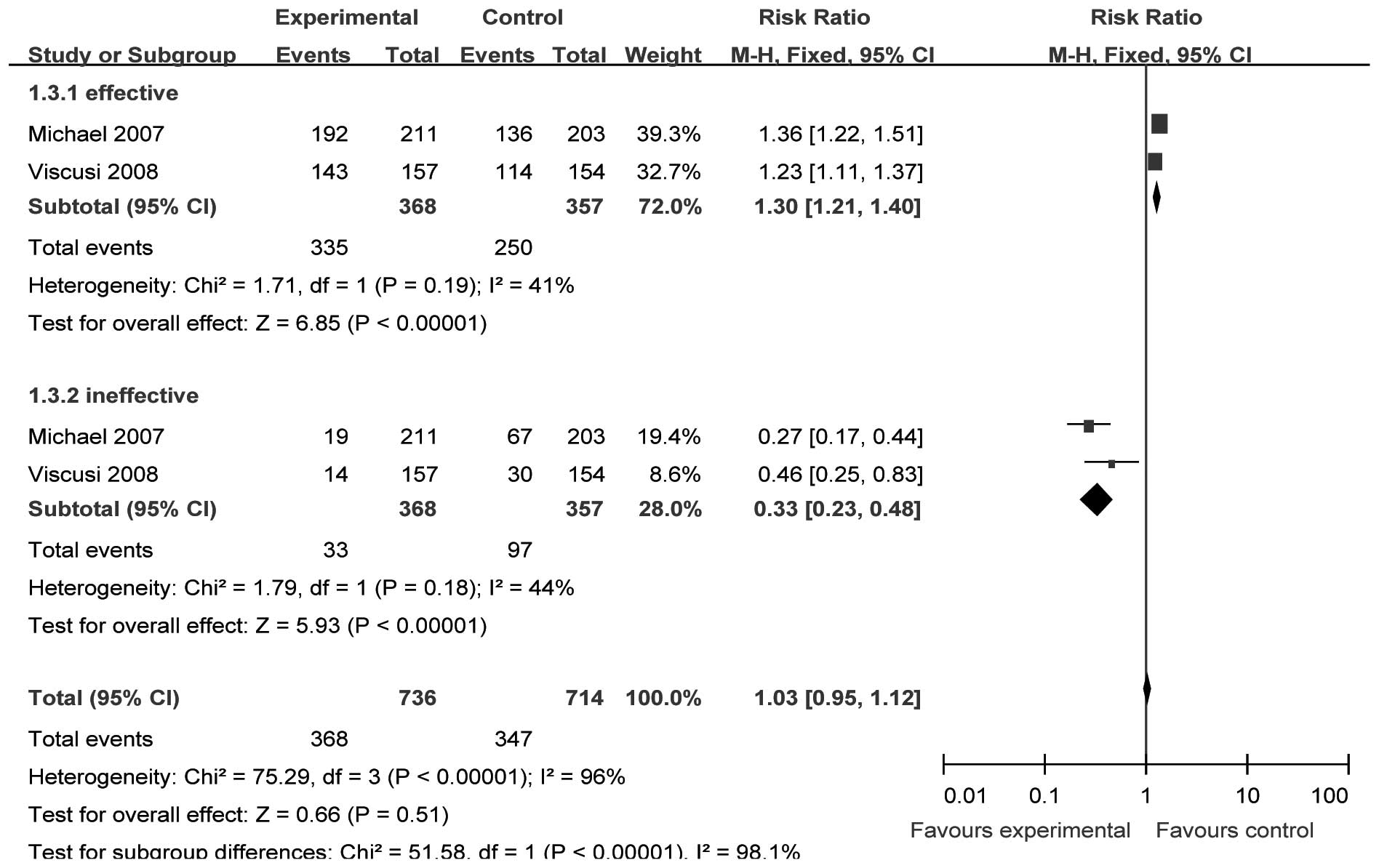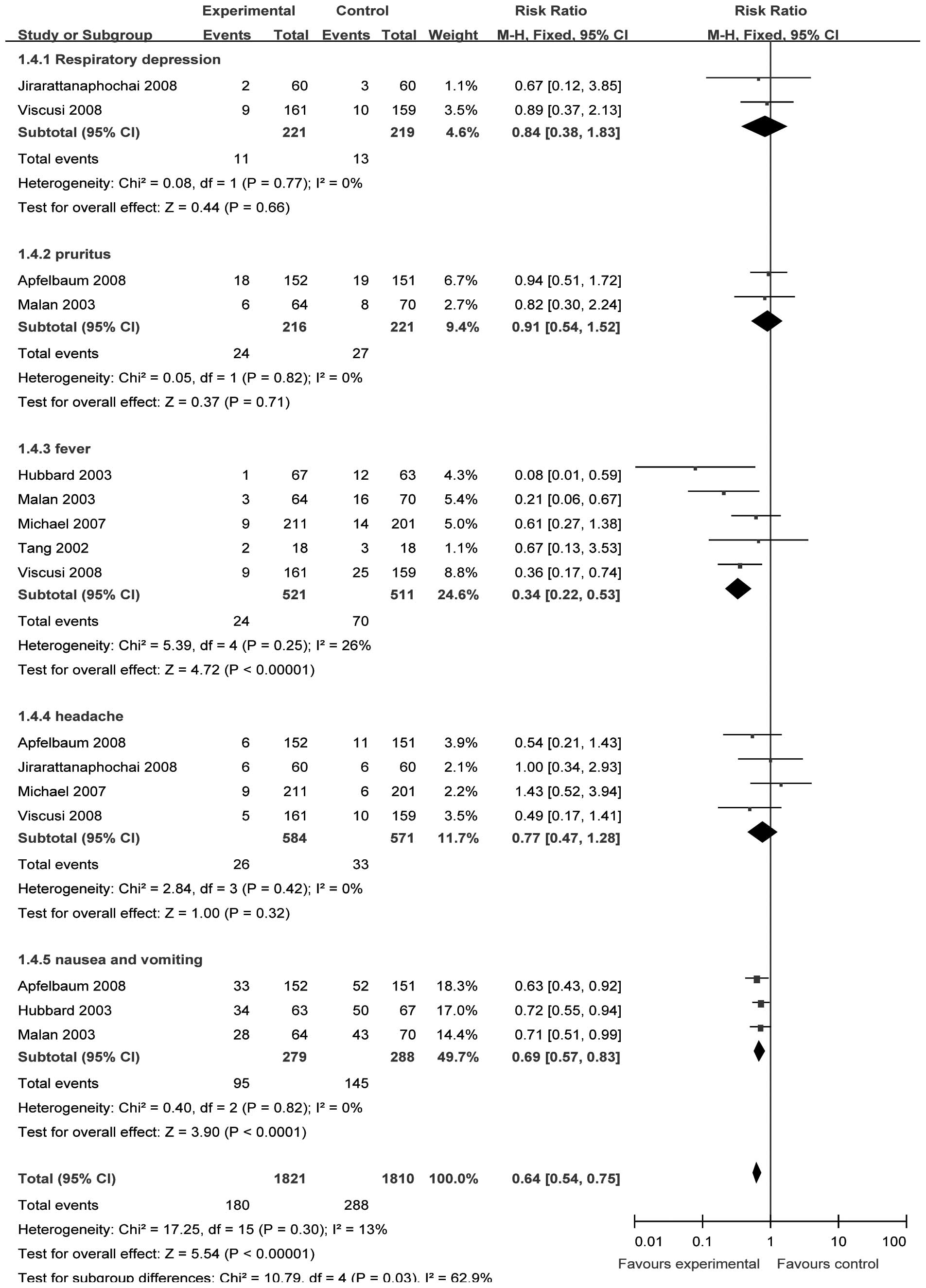|
1.
|
Barden J, Derry S, McQuay HJ and Moore RA:
Single dose oral ketoprofen and dexketoprofen for acute
postoperative pain in adults. Cochrane Database Syst Rev.
4:CD0073552009.PubMed/NCBI
|
|
2.
|
Vane JR: Inhibition of prostaglandin
synthesis as a mechanism of action for the aspirin-like drugs. Nat
New Biol. 231:232–235. 1971. View Article : Google Scholar : PubMed/NCBI
|
|
3.
|
Needleman P and Isakson PC: The discovery
and function of COX-2. J Rheumatol Suppl. 49:6–8. 1997.
|
|
4.
|
Rømsing J and Møiniche S: A systematic
review of COX-2 inhibitors compared with traditional NSAIDs, or
different COX-2 inhibitors for post-operative pain. Acta
Anaesthesiol Scand. 48:525–546. 2004.PubMed/NCBI
|
|
5.
|
Lloyd R, Derry S, Moore RA and McQuay HJ:
Intravenous or intramuscular parecoxib for acute postoperative pain
in adults. Cochrane Database Syst Rev. 2:CD0047712009.PubMed/NCBI
|
|
6.
|
Graff J, Arabmotlagh M, Cheung R,
Geisslinger G and Harder S: Effects of parecoxib and dipyrone on
platelet aggregation in patients undergoing meniscectomy: a
double-blind, randomized, parallel-group study. Clin Ther.
29:438–447. 2007. View Article : Google Scholar
|
|
7.
|
Harris SI, Stoltz RR, LeComte D and
Hubbard RC: Parecoxib sodium demonstrates gastrointestinal safety
comparable to placebo in healthy subjects. J Clin Gastroenterol.
38:575–580. 2004. View Article : Google Scholar
|
|
8.
|
Noveck RJ, Laurent A, Kuss M, Talwalker S
and Hubbard RC: Parecoxib sodium does not impair platelet function
in healthy elderly and non-elderly individuals: two randomised,
controlled trials. Clin Drug Investig. 21:465–476. 2001. View Article : Google Scholar
|
|
9.
|
Stoltz RR, Harris SI, Kuss ME, LeComte D,
Talwalker S, Dhadda S and Hubbard RC: Upper GI mucosal effects of
parecoxib sodium in healthy elderly subjects. Am J Gastroenterol.
97:65–71. 2002. View Article : Google Scholar
|
|
10.
|
Sackett DL, Clarke M and Oxman AD:
Cochrane Reviewers, Handbook 4.2. Renew Manager. Versions 4.2
Oxford, England: The cochrane collaboration; pp. 13–36. 2002
|
|
11.
|
Jüni P, Altman DG and Egger M: Systematic
reviews in health care: Assessing the quality of controlled
clinical trials. BMJ. 323:42–46. 2001.
|
|
12.
|
Jadad AR, Moore RA, Carroll D, Jenkinson
C, Reynolds DJ, Gavaghan DJ and McQuay HJ: Assessing the quality of
reports of randomized clinical trials: is blinding necessary?
Control Clin Trials. 17:1–12. 1996. View Article : Google Scholar
|
|
13.
|
Jüni P and Egger M: PRISMAtic reporting of
systematic reviews and meta-analyses. Lancet. 374:1221–1223.
2009.
|
|
14.
|
Apfelbaum JL, Desjardins PJ, Brown MT and
Verburg KM: Multiple-day efficacy of parecoxib sodium treatment in
postoperative bunionectomy pain. Clin J Pain. 24:784–792. 2008.
View Article : Google Scholar : PubMed/NCBI
|
|
15.
|
Michael C, Artur J, Kotarski J, Katz TK,
Brown MT and Verburg KM: Parecoxib sodium administered over several
days reduces pain after gynecologic surgery via laparotomy. J Clin
Anesth. 19:448–455. 2007. View Article : Google Scholar : PubMed/NCBI
|
|
16.
|
Viscusi ER, Gimbel JS, Halder AM, Snabes
M, Brown MT and Verburg KM: A multiple-day regimen of parecoxib
sodium 20 mg twice daily provides pain relief after total hip
arthroplasty. Anesth Analg. 107:652–660. 2008. View Article : Google Scholar : PubMed/NCBI
|
|
17.
|
Tang J, Li S, White PF, Chen X, Wender RH,
Quon R, Sloninsky A, Naruse R, Kariger R, Webb T and Norel E:
Effect of parecoxib, a novel intravenous cyclooxygenase type-2
inhibitor, on the postoperative opioid requirement and quality of
pain control. Anesthesiology. 96:1305–1309. 2002. View Article : Google Scholar : PubMed/NCBI
|
|
18.
|
Malan TP Jr, Marsh G, Hakki SI, Grossman
E, Traylor L and Hubbard RC: Parecoxib sodium, a parenteral
cyclooxygenase-selective inhibitor, improves morphine analgesia and
is opioid-sparing following total hip arthroplasty. Anesthesiology.
98:950–957. 2003. View Article : Google Scholar
|
|
19.
|
Jirarattanaphochai K, Thienthong S, Sriraj
W, Jung S, Pulnitiporn A, Lertsinudom S and Foocharoen T: Effect of
parecoxib on postoperative pain after lumbar spine surgery. Spine.
33:132–139. 2008. View Article : Google Scholar : PubMed/NCBI
|
|
20.
|
Hubbard RC, Naumann TM, Traylor L and
Dhadda S: Parecoxib sodium has opioid-sparing effects in patients
undergoing total knee arthroplasty under spinal anaesthesia. Br J
Anaesth. 90:166–172. 2003. View Article : Google Scholar : PubMed/NCBI
|
|
21.
|
Koppert W, Wehrfritz A, Körber N, Sittl R,
Albrecht S, Schüttler J and Schmelz M: The cyclooxygenase isozyme
inhibitors parecoxib and paracetamol reduce central hyperalgesia in
humans. Pain. 108:148–153. 2004. View Article : Google Scholar : PubMed/NCBI
|
|
22.
|
Beaulieu P: Non-opioid strategies for
acute pain management. Can J Anaesth. 54:481–485. 2007. View Article : Google Scholar : PubMed/NCBI
|
|
23.
|
Maund E, McDaid C, Rice S, Wright K,
Jenkins B and Woolacott N: Paracetamol and selective and
non-selective non-steroidal anti-inflammatory drugs for the
reduction in morphine-related side-effects after major surgery: a
systematic review. Br J Anaesth. 106:292–297. 2011. View Article : Google Scholar
|
|
24.
|
Higgins J, Thompson S, Deeks J and Altman
D: Statistical heterogeneity in systematic reviews of clinical
trials: a critical appraisal of guidelines and practice. J Health
Serv Res Policy. 7:51–61. 2002. View Article : Google Scholar : PubMed/NCBI
|















